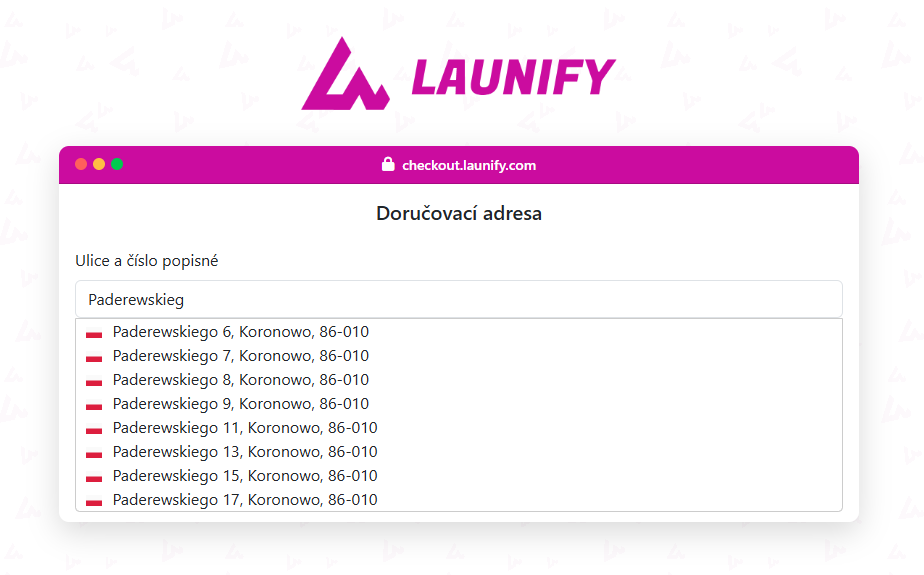Article
E-shop Expansion: What to Focus on in Slovakia
Slovakia offers excellent opportunities for expanding e-shops due to low competition and a growing market. This article examines the key factors of the Slovak e-commerce market, popular product categories, payment methods, and recommendations for successful business in this country.

Published on: 12.5.2025 • Written by: Team Launify Reading Time: 15 min
E-commerce Overview in Slovakia
Slovakia, a landlocked country in Central Europe, borders the Czech Republic, and thanks to a shared history, its online market has many similarities with the Czech one. Although it is a smaller European economy, the low number of e-shops and little competition present excellent opportunities for online retailers. Slovakia is economically heavily dependent on Germany, which is also reflected in trade relations. This article will focus on e-commerce in the country, its specifics, and key factors that differentiate it from the surrounding markets.
Basic Socio-Economic Data
Slovakia is a parliamentary democracy with a president at its head. With a market economy and Slovak as the official language, Czech is also often spoken. The country is predominantly Slovak-populated (86%), and most residents identify as Roman Catholic. The currency is the euro (EUR), and the capital city is Bratislava.
Statistics for 2019:
- Population: 5.45 million
- Area: 46,096 km²
- Population density: 110 inhabitants/km²
- GDP: 96.2 billion EUR
- GDP per capita: 17,693 EUR
After the fall of communism in 1989, Slovakia became a sovereign state. Although the beginnings were associated with corruption and rising national debt, the economy stabilized after joining the EU. The main export commodities are automobiles, engineering products, and metals. Trade within the EU accounts for 86% of exports, and imports from the EU account for 80%.
State of E-commerce in Slovakia
The Slovak internet market has 3.9 million users (72% of the population), and online sales in 2018 reached 759 million EUR. Annual growth of 10% is expected, which for 2019 means approximately 7.23 million EUR. Although there are fewer active e-shops in Slovakia than in the Czech Republic (10,000), the market offers low competition and opportunities for expansion.
Sociodemographic data:
- 25-34 years: 28% of internet users
- 35-44 years: 25%
- 45-54 years: 19%
- 18-24 years: 18%
E-commerce Development and Trends
In 2023, the estimated turnover of the Slovak e-commerce market will climb to 1.12 billion EUR. Market growth is supported by higher shopping cart values and more frequent online purchases. The average spending value per e-shop in 2019 was 209 EUR, which is expected to increase to 285 EUR by 2023. Foreign purchases on platforms such as eBay, Amazon, Aliexpress, and Alibaba are also a trend.
Best-selling categories:
- Electronics (36%)
- Toys (29%)
- Clothing (19%)
Payment methods
The most common payment method remains credit card (40%), followed by cash on delivery (33%). In 2023, a slight decrease in the share of card payments is expected (to 38%) and an increase in the use of e-wallets, with ApplePay being one of the main factors.
Shipping
Popular companies for shipping packages to Slovakia include:
- Zásilkovna: A cheap and effective solution for Europe.
- DPD: Extensive European network.
- TNT Express and DHL: International logistics companies.
- UPS: Global shipping giant.
Online Platforms
Slovakia has a strong presence of domestic and foreign online platforms, including:
- Heureka.sk: Price comparison website with more than 11 million visits annually.
- Alza.sk: The largest Slovak e-shop with electronics and other goods.
- Aliexpress.com: Global online marketplace.
- Bazar.sk: Online classifieds platform for individuals and companies.
To increase the confidence of Slovak customers, we recommend localizing the e-shop, including high-quality translations, adjusting sizes and currencies, and using the correct marketing approach. Mobile optimization is a necessity, given the growing popularity of mobile shopping.


